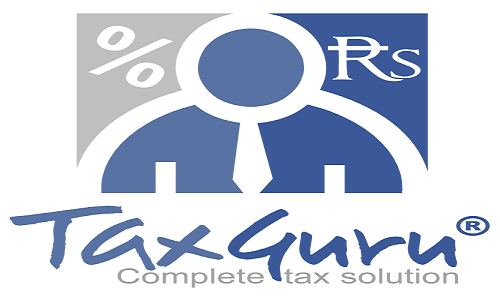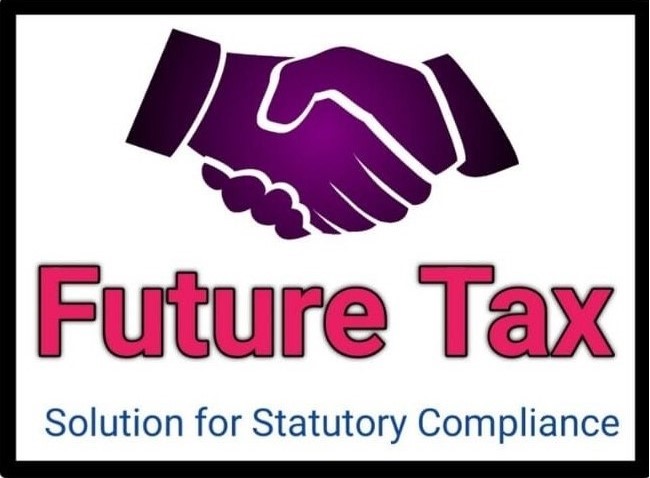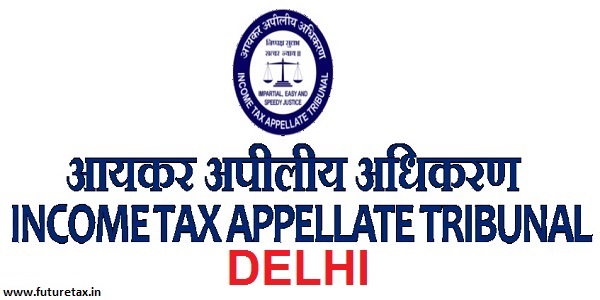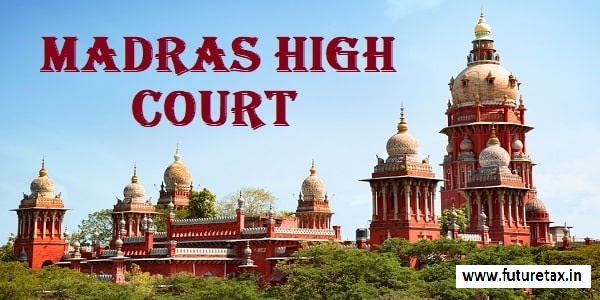
Negative Balance in ECL: Conflicting High Court Rulings in Tamil
- Tamil Tax upate News
- December 30, 2024
- No Comment
- 94
- 20 minutes read
Controversy About Negative Balance in ECL And Conflicting High Court Judgments on The Issue
Since the insertion of Rule 86A in the CGST Rules, 2017, vide notification no. 75/2019-Central Tax dated December 26, 2019, by the CBIC, there has been a ranging controversy regarding the power and its limits as far as the blocking of the credit in the Electronic Credit Register ( ECL) is the taxpayers is concerned. This controversy has gained acceleration in the wake of the Departmental authorities freezing the ECL by creating even negative balance in the ECL when there is no credit balance available in the ECL of the taxpayers. The matter has been agitated and controverted before the various High Courts. The conflicting verdicts by the High courts, on the one hand, holding that the Department cannot create negative balance and freeze the ECL when there is no credit balance available in the ECL, and that the Department is authorized to do so has added more confusion and gave scope for more litigation in terms of number of cases as well as the prolonged litigation. Hence, till the matter is conclusively set to rest by the Apex Court, the confusion is likely to continue adding to the woes of the taxpayers and adding to the additional work in terms of executive workload and legal cases before the Courts.
This Rule enables the Competent Authority to disallow utilization of the amount of credit available in ECL for discharge of any liability for payment of tax, interest, penalty and other amounts under section 49 of the CGST Act, or to refuse the request for refund of any unutilised credit in ECL. However, the authority cannot block the ECL without having reason to believe that the registered person has availed input tax fraudulent or the credit is ineligible to him. Also, the authority needs to record such reason in writing before blocking the ECL of the registered person.
However, there are many instances, where the revenue department instead of blocking the amount available in ECL creates a negative balance in the ECL. Resultantly, till the negative balance in the ECL of the registered person is not extinguished by further addition (credit) of ITC in the ECL, the registered person is disabled to utilize the ITC availed by them for payment of their dues even in respect of the credit available even for the subsequent valid inward supplies. Thus, in effect, only the ITC remaining after adjusting the negative balance, would be available to the registered person for discharging its dues. The blocking of ECL and making the balance negative seems to be absurd. But it is important to understand the rationale provided by the revenue department for their act of making the balance of ECL negative.
Two prominent conflicting judgments, one by the Hon’ble Delhi Court and another by Hon’ble Madras High Court need reference in this regard.
The Honourable High Court of Delhi, in Best Crop Science Pvt. Ltd. vs. Principal Commissioner, CGST Commissionerate (2024) 22 Centax 531 (Del.) has addressed a very important issue on Rule 86A of the Central Goods and Services Tax (CGST) Rules, 2017—that is whether tax authorities can block Input Tax Credit (ITC) more than what is available in a taxpayer’s Electronic Credit Ledger (ECL) at the time of the order of blocking of ITC.
This case involved multiple orders issued by the Commissioner or authorized officers under Rule 86A, that blocked ITC beyond the available balance in the ECL, leading to negative balance in ECL that prevented taxpayers from using the legitimate ITC. The petitioner contended that Rule 86A does not permit blocking ITC beyond the credit available at the time of passing the order, claiming that such over-blocking has violated the provisions of Rule 86A. The Revenue contended that the rule allowed blocking ITC even in excess of the available balance if the authorities believed the ITC had been fraudulently availed.
However, the court held that Rule 86A is an emergent measure meant to prevent use of wrongful ITC and is not a tool for tax recovery. It emphasized that blocking ITC beyond what is available creates an artificial negative balance, which is not allowed under the CGST Act or the rules. The Court observed that opening part of this rule deals with conditions which are required to be fulfilled in order to invoke the powers under this rule. The opening conditions clearly provide that the credit of input tax should be available in the electronic credit ledger.
In its detailed judgment, the court made a significant observation:
“82. Rule 86A(1) of the Rules does not contemplate an order, the effect of which is to require a taxpayer to replenish his ECL with valid availment of ITC, to the extent of ITC used in the past, which the Commissioner or an officer authorized by him has reasons to believe, was fraudulently availed or was ineligible. Such an interpretation would in effect amount to construe an order under Rule 86A(1) of the Rules as an order for recovery of tax. This is obvious because the taxpayer would now have to incur a larger cash outflow for payment of taxes as he would be denied utilization of validly availed ITC, which he would require to accumulate to compensate for the ITC availed and utilized which the Commissioner or an officer authorized by him, has reasons to believe was fraudulently availed or was ineligible.”
The court referred to several judicial precedents in arriving at its decision, including the judgments of the Gujarat High Court in Samay Alloys India (P.) Ltd. v. State of Gujarat [2022] 135 taxmann.com 243 (Guj.) and the Telangana High Court in Laxmi Fine Chem v. Assistant Commissioner [2024] 87 GSTL 197(2024) 18 Centax 134 (Telangana), both of which dealt with similar issues concerning the interpretation of Rule 86A.
In these cases, the courts similarly held that Rule 86A could only be invoked to block the ITC which is available in the ECL at the time of the order, and that creating a negative balance by blocking more than the available ITC was illegal and beyond the scope of the rule.
CONTRARY & PRO-REVENUE DECISION OF THE MADRAS HIGH COURT
To the contrary, the recent judgment of the Madras High Court in the case of Tvl. Skanthaguru Innovations Private Limited v. Commercial Tax Officer & Ors. [Writ Petition No. 29872 of 2024 dated November 28, 2024] has sparked a new debate as to whether the revenue department can make the balance of Electronic Credit Ledger (“ECL”) negative by exercising the power of Rule 86A of the Central Goods and Services Tax Rules, 2017 (“CGST Rules”).
Since, the decision of one high court is not binding on another High Court, the Madras High court resorted to its own independent and contrary interpretation and for that the court has tried to split interpretation of the rule in 2 parts.
The first part of Rule 86A states that “The Commissioner or an officer authorised by him in this behalf, not below the rank of an Assistant Commissioner, having reasons to believe that credit of input tax available in the electronic credit ledger has been fraudulently availed or is ineligible”.
The Hon’ble High Court held that the literal interpretation of this part of the provisions of Rule 86A(1) would show that if the Commissioner or the Assistant Commissioner having reason to believe that the ITC available in ECL has been fraudulently availed or ineligible, the said ECL can be blocked under the circumstances mentioned in Rule 86A(1)(a) to (d) of GST Rules.
The second part of the rule states that “may, for the reasons to be recorded in writing, not allow debit of an amount equivalent to such credit available in electronic credit ledger for discharge of liabilities under Section 49”.
Meaning that the Officers have to record the reasons in writing not to allow the debit of amount equivalent to such credit for discharge of liabilities under Section 49. The word “amount equivalent to such credit for discharge of liabilities” would mean that not only the fraudulently availed ITC amount available in the ECL, but an amount equivalent to fraudulently availed credit utilised for discharge of liabilities under Section 49.
On conjoint reading of first and second parts of Rule 86A would clearly reveal that the word “available in the ECL” referred in 1st part would mean that the amount available after the fraudulent availment of credit at any point of time, whether it was available in the ECL or utilised at the time of passing the blocking orders. In other words, if ITC was already utilised, the authorities are also empowered to pass blocking orders to the extent of amount equivalent to such credit, which was already utilised, along with the unutilised fraudulently availed ITC amount available in the ECL at the time of passing the blocking orders.
The Hon’ble Court opined that the prosecuting Authorities may not have any chance to know about the wrongful availment of ITC immediately upon such availment/utilisation. It will come to their knowledge subsequently and by that time, the ITC could have been utilised by the registered person. Keeping the said aspects in mind, the Rule 86A was incorporated.
In a Statute, if the literal interpretation of a portion of Rule which would defeat the object of the said Rule, the same has to be interpreted in entirety. In such event, if the interpretation of whole Rule exhibits the object and purpose of the legislature and beneficial for the Revenue, the interpretation of Rule in entirety will supersede the interpretation, which was made with a portion of the Rule.
Also, the court noted that the law nowhere prohibits negative blocking of ECL. When the Statute has not stated anything in the statutory term, it has to be construed that the word “blocking” includes both positive and negative blocking. If the intention of the legislature is not to allow the negative blocking, they are supposed to have specifically prohibited the same by virtue of proviso or otherwise. In this case, no such prohibition is available and hence, in the absence of any such prohibition for negative blocking, the blocking referred in Rule 86A has to be construed for both positive and negative blocking.
Now before delving into the arena of discourse of the opinion formation as to the appropriate purport of insertion of Secton 86A, it will be relevant to reproduce the section ipso facto here : –
Section 86A. Conditions of use of amount available in electronic credit ledger.-
(1) The Commissioner or an officer authorised by him in this behalf, not below the rank of an Assistant Commissioner, having reasons to believe that credit of input tax available in the electronic credit ledger has been fraudulently availed or is ineligible in as much as
a) the credit of input tax has been availed on the strength of tax invoices or debit notes or any other document prescribed under rule 36–
i. issued by a registered person who has been found non-existent or not to be conducting any business from any place for which registration has been obtained;
or
ii. without receipt of goods or services or both; or
b) the credit of input tax has been availed on the strength of tax invoices or debit notes or any other document prescribed under rule 36 in respect of any supply, the tax charged in respect of which has not been paid to the Government; or
c) the registered person availing the credit of input tax has been found non-existent or not to be conducting any business from any place for which registration has been obtained; or
d) the registered person availing any credit of input tax is not in possession of a tax invoice or debit note or any other document prescribed under rule 36, may, for reasons to be recorded in writing, not allow debit of an amount equivalent to such credit in electronic credit ledger for discharge of any liability under section 49 or for claim of any refund of any unutilised amount.
(2) The Commissioner, or the officer authorised by him under sub-rule (1) may, upon being satisfied that conditions for disallowing debit of electronic credit ledger as above, no longer exist, allow such debit.
(3) Such restriction shall cease to have effect after the expiry of a period of one year from the date of imposing such restriction.
LEGAL POSITION ABOUT THE CONSTRUCTION OF STATUTES :
Before preceding further, it may be mentioned here that it has been laid crystal clear by the Hon’ble Supreme Court that where there is no ambiguity and legislative intent is clear, the literal construction is to be made.
It has been held that “In construing a statutory provision the first and foremost rule of construction is the literal construction. All that the Court has to see at the very outset is what does the provision say. If the provision is unambiguous and if from the provision the legislative intent is clear, the Court need not call into aid the other rules of construction of statutes. The other rules of construction are called into aid only when the legislative intent is not clear.”(M/s. Hiralal Ratanlal vs. STO, AIR 1973 SC 1034).
Further, it has been laid down that the first and foremost principle of interpretation of a statute in every system of interpretation is the literal rule of interpretation. The other rules of interpretation e.g. the mischief rule, purposive interpretation etc. can only be resorted to when the plain words of a statute are ambiguous or lead to no intelligible results or if read literally would nullify the very object of the statute. Where the words of a statute are absolutely clear and unambiguous, recourse cannot be had to the principles of interpretation other than the literal rule (Swedish Match AB vs. Securities and Exchange Board, India, AIR 2004 SC 4219).
Further, laying down the equitable construction rules, in CST v. Modi Sugar Mills Ltd. wherein the Hon’ble Supreme court has observed that:
“…..In interpreting a taxing statute, equitable considerations are entirely out of place. Nor can taxing statutes be interpreted on any presumptions or assumptions. The Court must look squarely at the words of the statute and interpret them. It must interpret a taxing statute in the light of what is clearly expressed: it cannot imply anything which is not expressed; it cannot import provisions in the statutes so as to supply any assumed deficiency.”
Keeping in view the above principles of construction of statutes affirmed by the Hon’ble apex Court, it can be safely inferred that Section 86A needs to be construed in its literal sense, keeping in view the equitable considerations, and at the same time giving effect to the legislative intent.
A perusal of Section 86 above, therefore, appears to be entailing the following points :
Firstly, that Rule 86A is an emergent measure meant to prevent use of wrongful ITC, by the comptent authority, on the reasons to believe that the same has been availed irregularly on the grounds mentioned in the Section.
Secondly, that credit of input tax is available in the electronic credit ledger. This means that the credit which is to be disallowed to be debited should be (1) available in the ECL and (2) only that much quantum as is found to be irregular as per law, has to be disallowed and no more. Thus, it appears that only the amount of credit available in the ECL subject to the maximum quantum being equivalent to be irregular credit availed has to be blocked/disallowed for debit.
Thirdly, that being an emergency measure conferring the drastic powers on the Commissioner to interdict the taxpayer from utilizing his available Input Tax Credit thereby depriving him of the valuable fund resources, it has to be resorted in a rare case requiring immediate and urgent necessity.
Conclusion: Though the taxpayer cannot be allowed to indulge in fraudulent activities and pass on the illegal ITC on the basis of fraudulent activities and fake documents, at the same time, the Department has to proceed according to the due procedure established by law. Therefore, it appears that the Department is duly empowered to block the ITC available on the ECL on the reasonable grounds of same having been fraudulent and irregularly/illegally availed to the extent of credit balance lying on the date of Order, but this does not give the power to the authorities to create negative balance in the ECL. The creation of negative balance in the ECL amounts to forcing the taxpayer to first replenish the ECL with the equivalent amount of valid ITC against the alleged irregular ITC already utilized by the taxpayer. This appears to be neither the legislative intent nor the ambit of Section 86A to allow the creation of negative balance in the ECL. If the Department does not act in time for definitive reasons within or beyond its control, the due procedure for the recovery of the irregular and illegal ITC as provided under Section 74 of the CGST by issuance of the proper show cause notice and adjudicatory process is to be followed. The creation of the artificial negative balance in the ECL without following the adjudicatory process under Section 74 of the CGST amounts to the denial of the principles of natural justice and direct recovery from the taxpayer on the alleged grounds of fraud / illegality in availing the ITC.
So it appears that the decision of the Hon’ble Delhi High Court appears to be logical and more rational than the decision of the Hon’ble Madras High Court. Till the final decision by the Hon’ble Supreme Court, the confusion will continue, though on the grounds of territorial jurisdiction of the respective High Courts, the authorities are bound by the respective judgments in the intervening period.
Another point to be pondered over here is whether Rule 86A inserted in CGST Rules, 2017, which is a subsidiary legislation under the primary legislation of CGST Act, 2017, can withstand the constitutionality validity given the interpretation adopted by the Hon’ble Madras High Court. This interpretation of the Rule 86A would amount to denial of the right of ITC, which is available to the taxpayer on the compliance of the provisions of Section 16 of the CGST Act, 2017. Thus, this Rule 86A if interpreted in this manner will be violative of Section 16 of the Act, which is not permissible.




